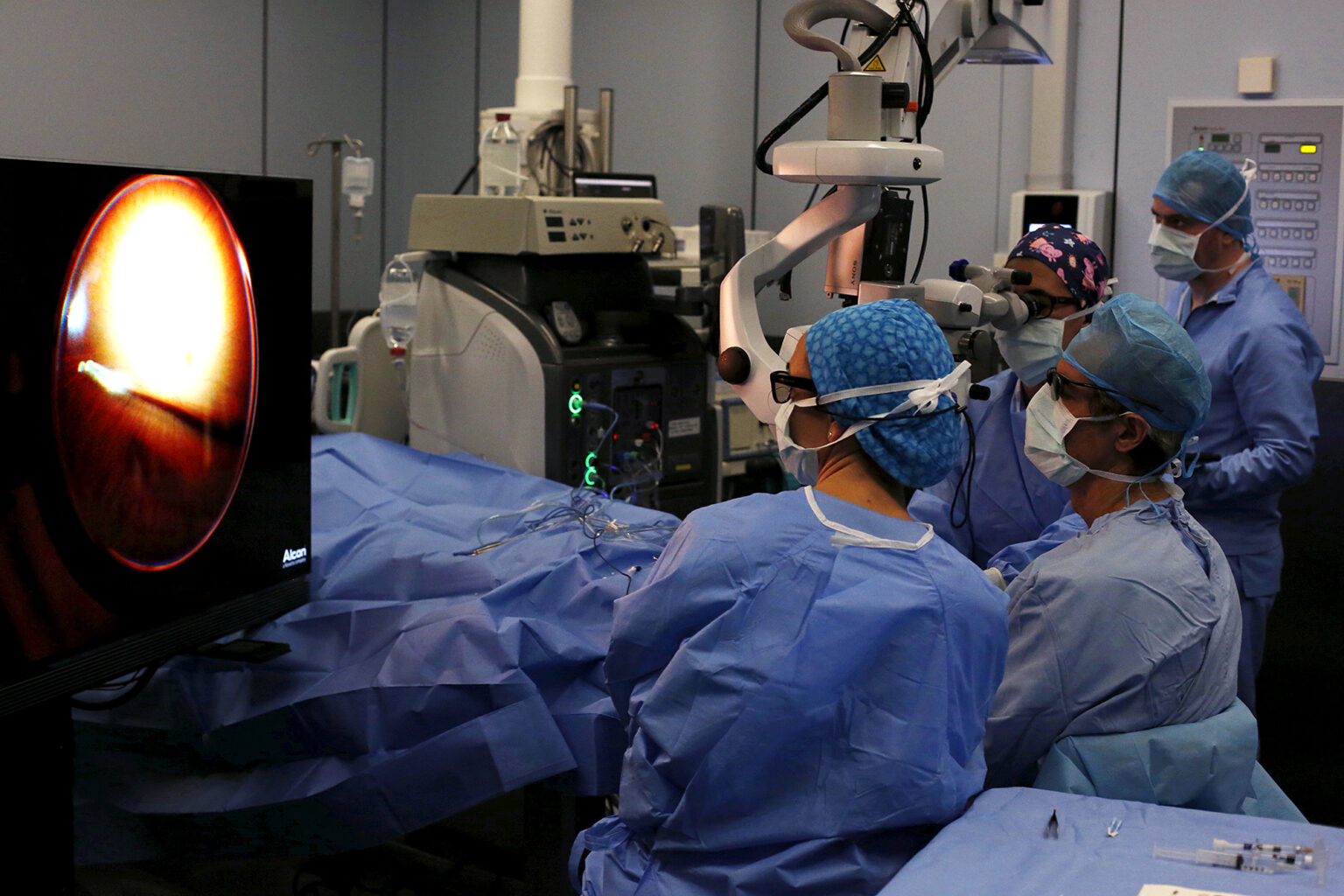
Retinal reattachment surgery usually takes one-two hours to perform.

In certain cases we may use silicone oil instead of gas your surgeon will review with you if this is appropriate for your surgery. We will place a green bracelet around your wrist indicating this after surgery, do not take off the bracelet until the gas dissipates from your eye. You cannot change elevation (fly on an airplane) or undergo general anesthesia with nitrous oxide gas while a gas bubble is in your eye. The gas bubble will dissipate from your eye within 4-6 weeks. The eye is then filled with an inert gas to keep the retina in position as it heals. The retina is then reattached and all retinal tears surrounded by laser. The vitreous is replaced by natural fluid produced inside the eye. The removal of the vitreous inside the eye does not cause any permanent harm. A vitrectomy surgery involves making 3 holes in the eye and using instruments to remove the jelly-like substance (the vitreous humor) that normally fills the center of the eye. This elongates your eye and makes you more nearsighted. A scleral buckling surgery involves positioning a silicone band around your eye beneath your eye muscles to bring in the walls of your eye. We use the most advanced surgical equipment and techniques available for retinal detachment surgery. Your retinal detachment surgery will likely involve a scleral buckling and/or vitrectomy procedure. Although not always the case, you can expect to need cataract surgery within a year of vitrectomy surgery in the operated eye. If you have not yet had cataract surgery, having vitrectomy surgery will accelerate progression of cataract in that eye. We will review any medications you are taking prior to surgery to ensure you are not taking any blood thinners that can increase your risk of bleeding. This can occur in or around the eye and lead to permanent vision loss. Anytime surgery is performed on the eye bleeding is a possible complication. If such an infection does occur it can be treated, although it may leave you with worse vision or in severe cases lead to blindness. Despite this, there is a very small chance that an infection can occur. Sterile technique is used during the procedure to minimize risk of infection. Anytime surgery is performed on the eye infection is a possible complication.

Patients often complain of flashes, new floaters and a shadow forming in their vision when a retinal detachment occurs. They are more common in patients who are very near- sighted, have a family history of retinal detachment, and in eyes that have had prior trauma or eye surgery. Why do I have a Retinal Detachment? What are the symptoms?Ī retinal detachment occurs when a tear forms in the retina allowing fluid to get under the retina forming a detachment. *Image courtesy of the National Eye Institute


 0 kommentar(er)
0 kommentar(er)
